Holding and Moving Work
Use these shop helpers as aids to trouble-free finishing.

Shop fixtures and accessories for securing, supporting, and moving workpieces can make your work a lot more efficient and give you much better finishing results.
Workbenches are critical for proper sanding and planing of workpieces. To be effective, a bench needs to be sturdy and able to secure workpieces in process. A stout cabinetmaker’s-style bench, with its integral tail and shoulder vises, is perfect for securing all types of work. However, a simple, stout, shop-made bench outfitted with a quick-release vise will work well too. Make sure the vise includes a sliding stop dog for securing panels flat on the bench.
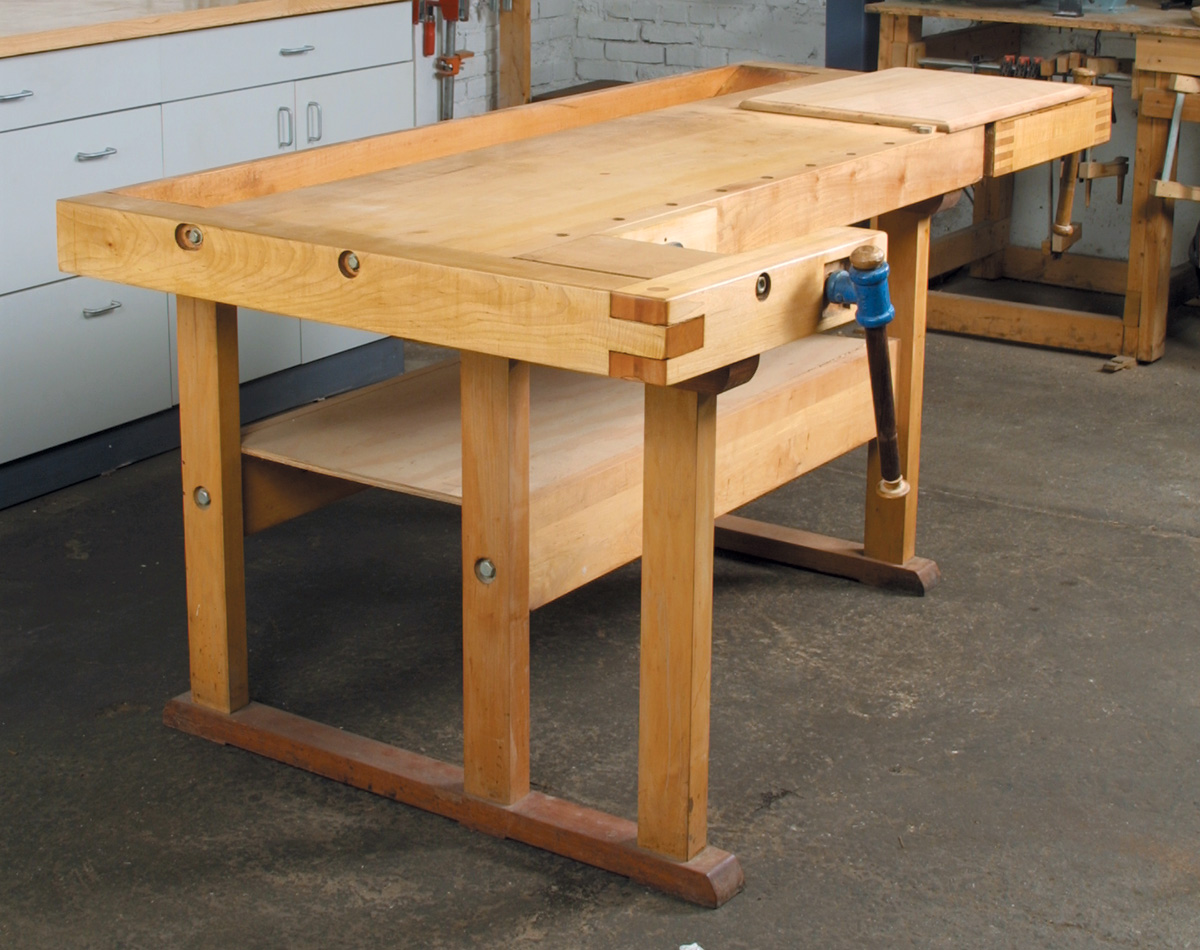
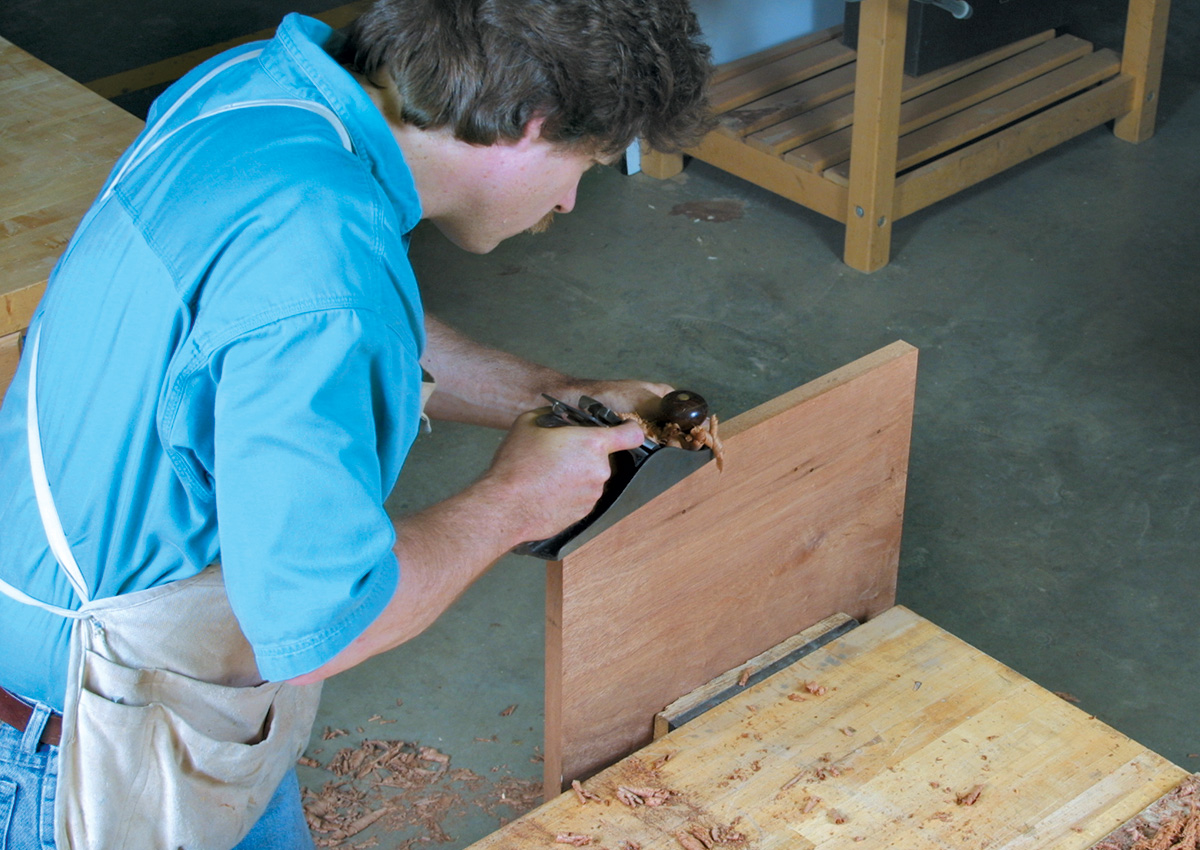
Dollies and carts are invaluable when it comes to moving projects around the shop. It’s easy to make your own by attaching casters to any sturdy platform or panel, sizing the units to whatever height suits you. For moving large pieces like entertainment centers and sideboards, I use an old wooden door outfitted with 4-in. neoprene casters, which I like because they roll easily.
Anti-fatigue mats provide great protection against scuffing work-in-process against floors and work surfaces. You can also use moving blankets for this, but they’re more difficult to keep clean. I find blankets are better for covering pieces before and after finishing and during delivery.
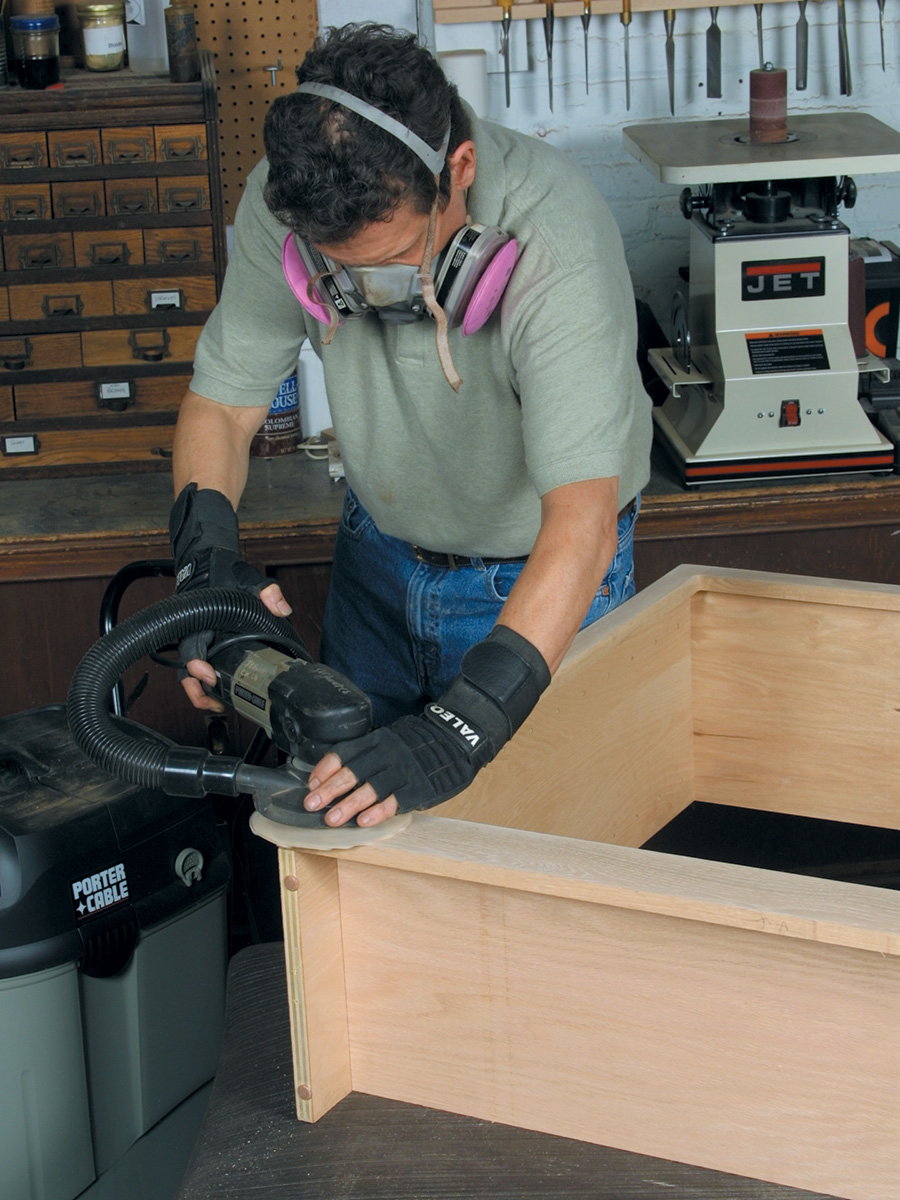
Finishing boards hold work during and after finish application. They’re particularly helpful when dealing with a lot of different parts, like drawers, doors, and shelves. Also called “nail boards,” the best finishing boards support the workpiece on nail or screw points. This way, you can apply the finish to the “nonshow” side first, then place that side on the points while you finish the “show” side.
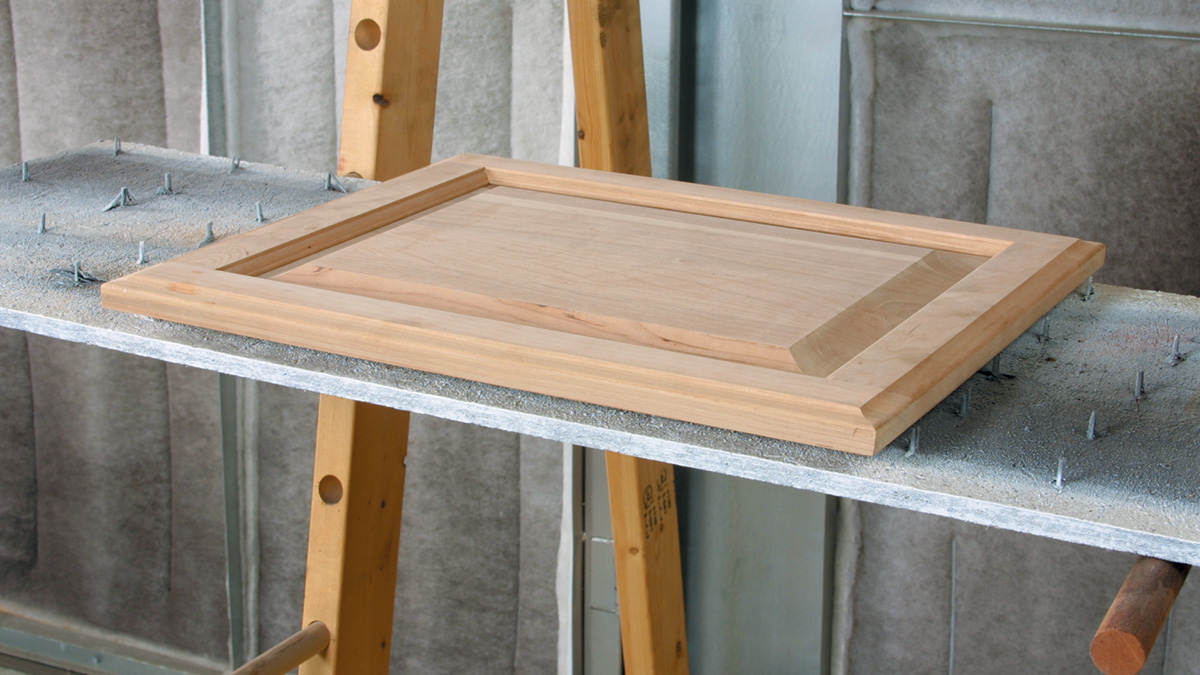
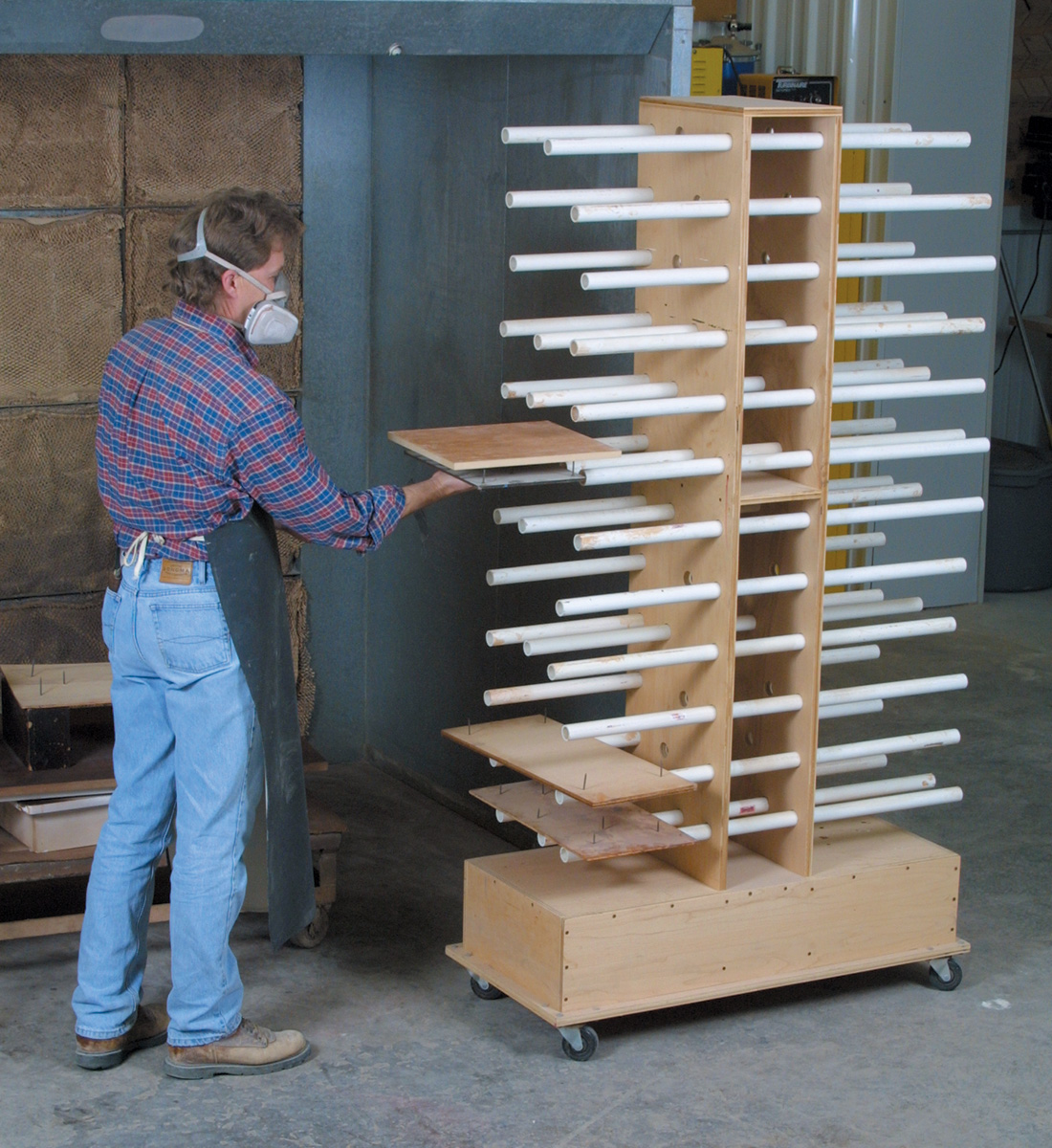
Nail boards are easy to make. One strategy is to drive four drywall screws though a piece of plywood. Alternatively, you can take the “bed of nails” approach, in which you drive staples through a board in a 4-in. grid. This distributes workpiece weight evenly, minimizing any marks in the finish. Of the two designs, precisely placed drywall screws with their sharp points are best for painted finishes. The blunt end of a staple can leave a visible mark on paint but is hardly visible on clear finishes.
Drying racks provide a consolidated space to put your finishing boards while the finish cures. The best drying rack design that I’ve seen is one that can be wheeled around when it’s full. Another option is to simply bolt to a wall a couple of 4x4s that have been drilled every 5 in. to accommodate 1-in.-diameter dowels or PVC pipe.
Finishing turntables are essential for spraying many projects. A simple finishing turntable can be made by attaching a plywood panel to a lazy-susan-type swivel plate, then fastening the unit to a table. However, a more effective and versatile design is a freestanding turntable/dolly unit. The base is outfitted with casters for mobility and weighted with sand to prevent tipping. Use threaded floor flanges to connect the different diameter pipes to the top and base.
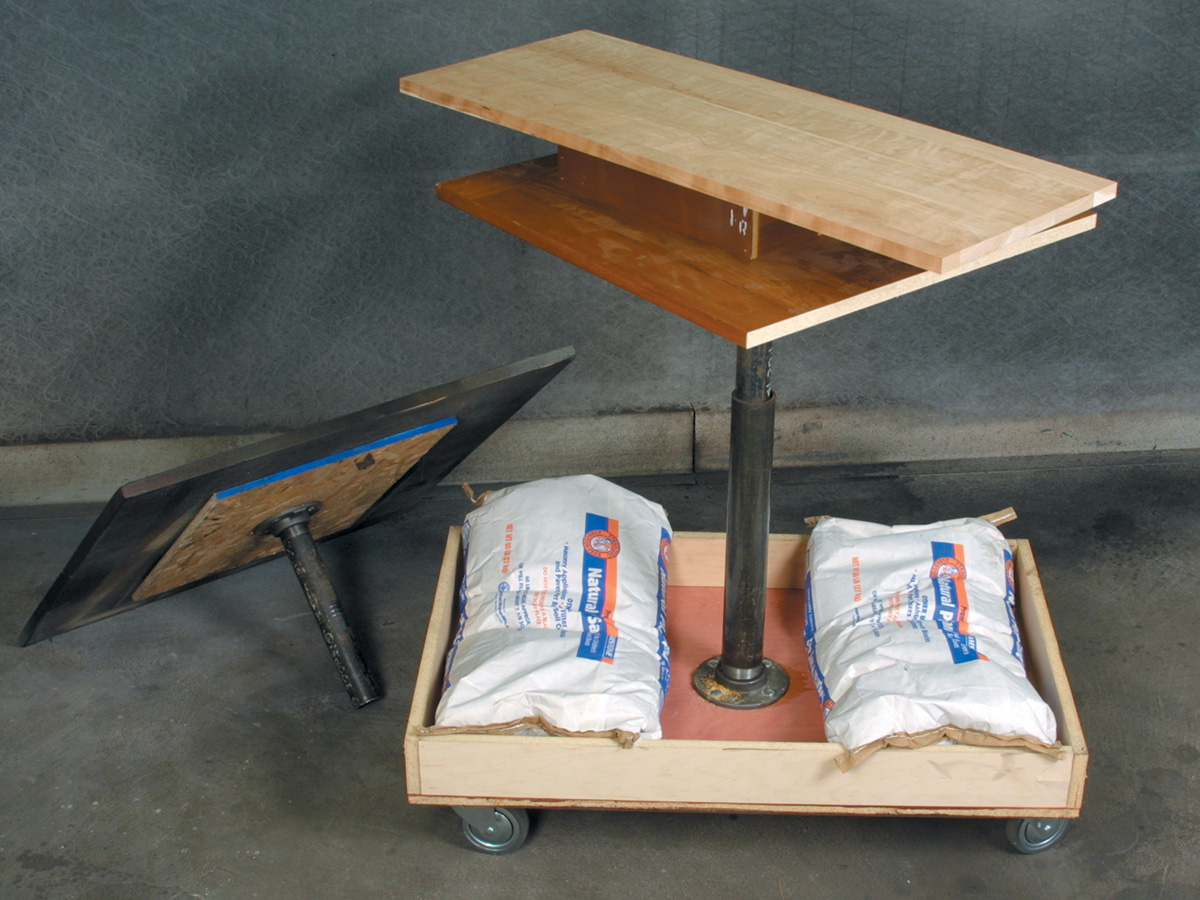
Fine Woodworking Recommended Products

Veritas Standard Wheel Marking Gauge

Tite-Mark Marking Gauge

WoodRiver Router Bit Storage Case

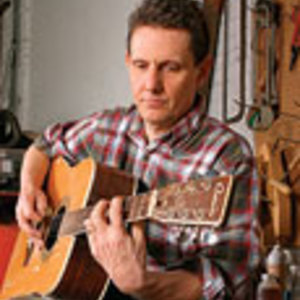






Log in or create an account to post a comment.
Sign up Log in